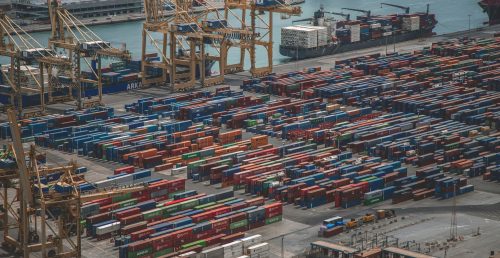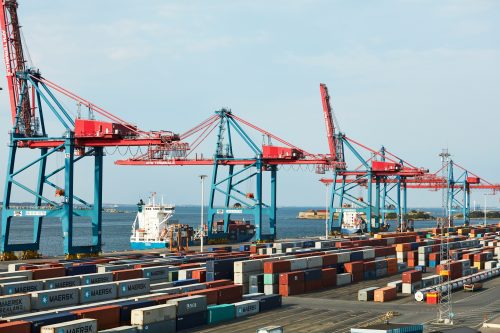
China’s prefabricated construction industry has experienced rapid growth over the past decade. With well-established supply chains and advanced manufacturing techniques, China is uniquely positioned to offer cost-e ffective and innovative prefab housing solutions. However, sourcing prefabricated homes in China requires careful planning to avoid pitfalls.
Why Prefabricated Homes from China Make Sense for North America
Cost & Efficiency
Lower Costs: Chinese prefab homes cost only two-thirds of comparable wood-frame homes in North America.
Faster Construction: Traditional construction timelines of 6–8 months are reduced to just 3–4 weeks, saving over 80% of time.
Durability
Longer Lifespan: Designed to last over 100 years, Chinese prefab homes far exceed the 40-year lifespan of North American wood-frame buildings.
Disaster Resistance: Built to withstand wildfires, hurricanes, and earthquakes, these homes are ideal for regions prone to natural disasters.
Flexible Layouts: Prefab designs allow for modular adjustments, making them suitable for long-term use and evolving needs.
Sustainability & Innovation
Zero Carbon Ecosystem: Integrated rooftop solar panels, energy storage systems, and EV charging stations create a closed-loop zero-carbon building.
Smart Home Features: Prefab interiors include modular kitchens, bathrooms, and smart home systems aligned with North America’s green building trends.
Environmental Impact: Prefabrication reduces construction waste by up to 90%, supporting North America’s push for sustainable housing solutions.
Market Potential in North America
Labor Cost Challenges: With construction workers earning over $50,000/year in North America, prefab solutions can significantly reduce labor expenses.
Housing Shortages: As governments aim to increase prefab housing adoption to 50% by 2030, China’s prefab models can help address urgent housing needs while lowering costs.
Challenges Faced by North American Buyers When Sourcing from China
While the benefits are clear, sourcing prefab homes from China comes with challenges that can lead to delays, increased costs, or quality issues if not managed properly.
Material Standards & Quality Issues
Suppliers may use low-cost materials intended for local Chinese self-built homes that fail to meet North American standards.
Lack of certifications like UL (Underwriters Laboratories) or ASTM (American Society for Testing and Materials) can lead to customs clearance issues or rejection by local architects.
Poor insulation, soundproofing, or fireproofing can result in buildings that fail inspection or pose safety risks.
Design & Regulatory Gaps
Many Chinese designers lack familiarity with North American building codes (e.g., wind/seismic resistance, energy ratings, zoning laws).
Designs may fail local approval processes, requiring costly redesigns and delaying projects.
Suppliers from informal rural construction backgrounds often lack professional experience, producing substandard designs unsuitable for North American markets.
Logistics & Damage Risks
Long shipping times via container freight are vulnerable to weather delays, customs issues, and port congestion.
Improper packing by inexperienced suppliers can lead to damaged components during transit, rendering them unusable upon arrival.
Hidden Costs
Low-price contracts may exclude essential materials, factory prefabrication, or installation components.
Buyers often face additional costs for local labor, structural reinforcements, or compliance certifications — driving up overall costs beyond local sourcing.
After-Sales Service Challenges
Quality issues often result in suppliers shirking responsibility or delaying responses due to cross-border communication barriers.
Lack of on-site technical support during installation can lead to further complications and expenses.
How North American Buyers Can Avoid Pitfalls
To ensure a smooth sourcing process and maximize the value of prefabricated homes from China, follow these actionable steps:
Choose Suppliers with Proven Experience
Request at least two completed North American projects and verify export credentials (e.g., customs clearance proof).
Ensure suppliers provide material certifications that meet North American standards (e.g., UL, ASTM).
Research supplier reviews and reputation through other customers.
Lock in Technical Parameters with Bilingual Contracts
Use professional design firms to refine blueprints and specify hundreds of material details (brand, model, quantity).
Demand compliance reports for building codes like IBC (International Building Code) and IRC (International Residential Code).
Ensure all certifications are included in the contract to avoid disputes later.
Hire Independent Third-Party Inspectors
Engage local inspectors to audit Chinese factories before shipment and verify compliance with North American standards.
Conduct pre-shipment inspections to ensure all components meet agreed specifications.
Pre-Approve Modular Designs
Collaborate with licensed Chinese architects who co-sign plans with local experts.
Submit pre-approval applications to local inspectors (DA review) and obtain DP/BP approvals before ordering materials.
Purchase Shipping Insurance
Opt for CIF (Cost, Insurance, Freight) terms with coverage for transport risks (freight insurance + installation insurance).
Protect against damage during shipping and installation.
Establish Local Emergency Support
Work with suppliers who have bilingual technical consultants based in cities like Vancouver or Toronto.
Ensure they can provide on-site assistance within 48 hours when needed.
Additional Tips for Successful Sourcing
Understand Local Regulations
Familiarize yourself with specific regional building codes and zoning laws in your target market (e.g., California’s seismic requirements or Canada’s energy efficiency standards). This will help you identify suppliers capable of meeting these specifications.
Prioritize Communication
Strong communication is key when working across borders. Choose suppliers with fluent English-speaking teams or bilingual representatives to avoid misunderstandings during negotiations.
Plan for Logistics Delays
Factor in potential shipping delays due to weather or port congestion when planning your project timeline. Build buffer time into your schedule to avoid disruptions.
Invest in Long-Term Partnerships
Rather than treating suppliers as one-off vendors, build long-term relationships with those who demonstrate reliability and professionalism. This will save time and effort on future projects.
China’s prefabricated housing solutions offer immense potential for addressing North America’s growing demand for efficient, durable, and sustainable construction. By understanding the challenges and taking proactive measures to avoid pitfalls, you can unlock the full benefits of sourcing from China while minimizing risks and maximizing value.
Whether you’re a developer looking to lower costs or a government agency addressing housing shortages, China’s prefab industry can be a game-changer — as long as you approach it strategically.
Are you looking for a reliable logistics carrier now?Contact us, Linktrans you for a free quote with no hidden costs.








